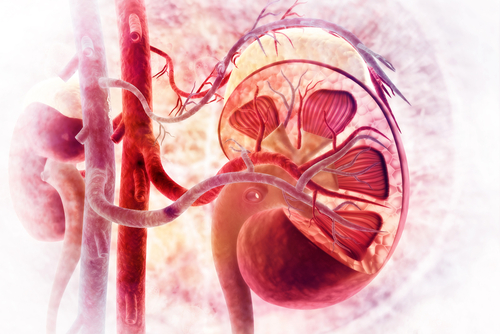Japanese Team Suggests Activin A as New Biomarker for Renal Damage in AAV Patients

crystal light/Shutterstock
Measuring the levels of activin A protein in the urine can help clinicians identify patients who have renal problems caused by antineutrophil cytoplasmic antibody (ANCA)-associated vasculitis, Japanese researchers found.
Additional studies are still warranted to shed light on the underlying role of activin A — a potential biomarker for renal damage — in the development of ANCA-associated vasculitis renal problems or other kidney diseases, the researchers said.
This finding was reported in “Urinary Activin A is a novel biomarker reflecting renal inflammation and tubular damage in ANCA-associated vasculitis,” a study published in the journal PLOS ONE.
Activin A is a protein that belongs to the transforming growth factor-beta superfamily, known to be involved in the regulation of growth and differentiation of cells in various organs.
In particular, activin A is known to control (negative regulator) kidney development and to block regeneration of renal tubules after injury in adult kidneys.
Evidence has revealed that the protein is an important regulator of inflammation. It also can induce renal tissue scaring (fibrosis), and has been linked to kidney inflammations (glomerulonephritis), lupus nephritis, and acute kidney injury.
Japanese researchers now set up a new study to evaluate the role of activin A in patients with ANCA-associated vasculitis (AAV), as many of them tend to have renal problems due to damage of the kidney blood vessels.
The study enrolled 51 patients with AAV who were treated at Gunma University Hospital in Japan from November 2011 to March 2018. Among the participants, 40 had first-onset AAV, five had relapsed AAV, and six were in AAV remission. Eight healthy people (controls) also were also included in the study. A total of 41 patients had renal complications.
Analysis of urine samples for activin A reveled that AAV patients had significantly higher levels as compared with healthy controls. Indeed, the health participants had almost undetectable amounts of the protein in their urine.
Further assessments showed that patients who had renal AAV had significantly higher levels of activin A than those without renal problems. Similar results were found in participants with active disease compared with patients in remission.
After follow-up of one, three, six, and 12 months in the individuals with first-onset renal AAV, researchers also found that urinary activin A decreased significantly after immunosuppressive treatment. In five of eight patients, these protein levels fell to a normal range — below 10 ng/gCr — at one month after treatment and remained low thereafter.
Evaluation of kidney tissue biopsies revealed that activin A protein could not be detected in healthy kidney samples. In contrast, in biopsies collected from the AAV patients, activin A was found to be present mainly in infiltrating immune cells and in proliferating cells within the kidney’s filtrating units.
A significant correlation was found between urinary activin A levels and urinary total protein, L-FABP, and NAG — which are markers of renal impairment.
“These data suggested that urinary activin A concentration reflects renal inflammation and tubular damage in AAV and may be a useful biomarker for monitoring renal AAV,” the researchers said.
“It is likely that urinary activin A levels reflect the severity of renal AAV, although it remains unclear whether urinary activin A would be of use as a renal prognosis marker or as a signal for renal relapse,” they said.



